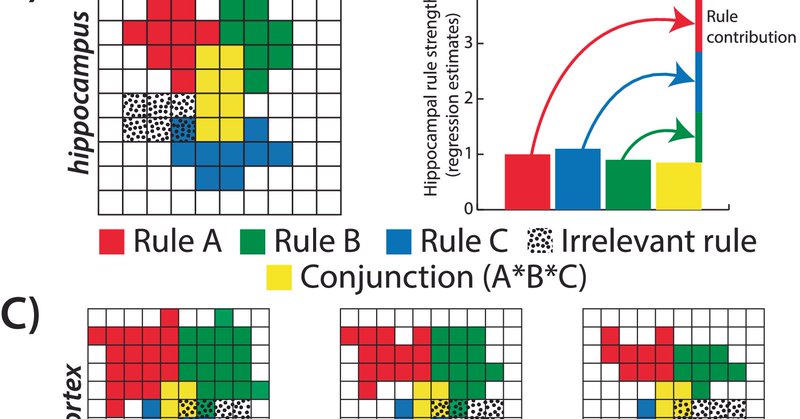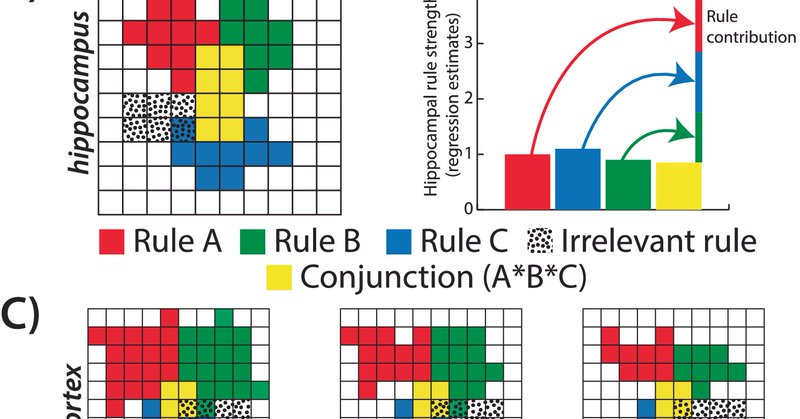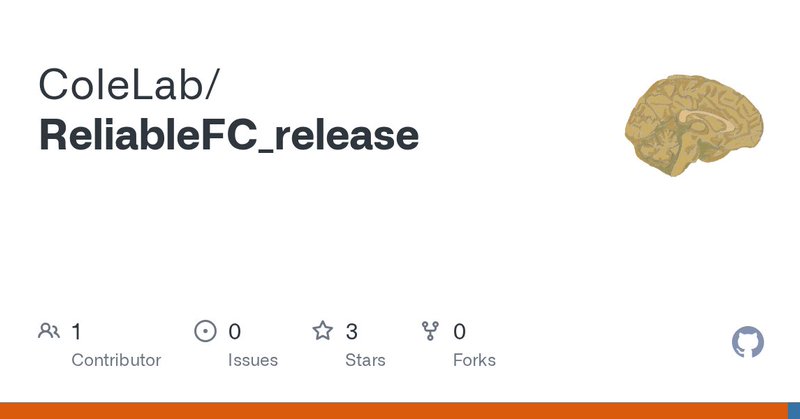
Michael W. Cole
@TheColeLab
Followers
4K
Following
2K
Media
183
Statuses
1K
Professor at Rutgers, director of a cognitive & network neuroscience lab – covering neuroimaging, connectivity, cognitive control ([email protected])
Rutgers University-Newark
Joined July 2013
New version of Actflow Toolbox just released ( https://t.co/8PPqQQxWux), adding glasso FC functionality. Demo: https://t.co/S9L7LPAZYA We found that glasso FC is an improvement on the fMRI field-standard functional connectivity measure (correlation): https://t.co/h2Y6hGL3kM
1
33
103
@RaviMill This study is now peer reviewed and published at Nature Communications! Congratulations to first author @RaviMill Check out the paper here (open access):
nature.com
Nature Communications - Learning shifts multi-task representations from compositional to conjunctive formats. Cortical conjunctions uniquely associate with effects of practice, and index switch...
0
2
2
@RaviMill This study is now peer reviewed and published at Nature Communications! Congratulations to first author @RaviMill Check out the paper here (open access):
nature.com
Nature Communications - Learning shifts multi-task representations from compositional to conjunctive formats. Cortical conjunctions uniquely associate with effects of practice, and index switch...
0
2
2
Excited to see our paper with @TheColeLab finally out in peer-reviewed form @NatureComms ! Please check it out: “Dynamically shifting from compositional to conjunctive brain representations supports cognitive task learning”,
nature.com
Nature Communications - Learning shifts multi-task representations from compositional to conjunctive formats. Cortical conjunctions uniquely associate with effects of practice, and index switch...
Lab's latest: "Neural representation dynamics reveal computational principles of cognitive task learning", wherein we tracked dynamic changes in cortical-subcortical cognitive representations over practice, revealing computational principles underlying task learning: 1/n
0
2
4
The graphical lasso functional connectivity approach that performed best in the paper can be implemented using the Activity Flow Toolbox: https://t.co/8PPqQQyuk5 also using the paper's code release: https://t.co/b7D8ykXOn7 [12/n]
github.com
Contribute to ColeLab/ReliableFC_release development by creating an account on GitHub.
0
0
1
Together, results demonstrated vast improvements in fMRI functional connectivity estimation using regularized partial correlation. Thanks to first author Kirsten Peterson, and coauthors Ruben Sanchez-Romero and Ravi Mill! 11/n
direct.mit.edu
Abstract. Functional connectivity (FC) has been invaluable for understanding the brain’s communication network, with strong potential for enhanced FC approaches to yield additional insights. Unlike...
1
0
0
And regularization improved prediction of individual differences in demographics (age) and behavior/cognition (general intelligence) relative to standard partial correlation. The glasso results were more interpretable than pairwise correlation (fewer false connections) 10/n
1
0
0
Also empirical, prediction of task-evoked activity (via activity flow modeling) was better with regularized partial correlation 9/n
1
0
0
As another empirical validation, regularized partial correlation was much less susceptible to motion artifacts than pairwise correlation. Percent connections linked to motion = Pairwise correlation FC: 56.4% vs. graphical lasso FC: 0.01% 8/n
1
0
0
First empirical validation: regularized partial correlation was much closer to structural connectivity, which doesn’t have the causal confounding problem (despite other issues) 7/n
1
0
0
This pattern of results was mirrored in empirical resting-state fMRI data across 4 validation measures. Regularization was key to estimating individual subject-level networks with reduced confounding. 6/n
1
0
0
In simulations, pairwise (standard) correlation led to many false connections, but so did partial correlation. Regularized partial correlation (glasso) better recovered the true network organization 5/n
1
0
0
We hypothesized that low reliability of partial correlation is due to overfitting to noise, with regularization (model simplification) improving reliability. 4/n
1
0
0
Pairwise correlations are known to be susceptible to false positives in theory. For example, region A causing activity in unconnected regions B and C (B<-A->C) can lead to a false B-C connection. Partial correlation can correct for this error, but not reliably 3/n
1
0
0
In brief: Improvements to pairwise (standard) correlation: 1) reduced false connections (confounding), 2) reduced sensitivity to in-scanner motion, 3) better correspondence to task-related activity, and 4) more interpretable links with individual differences in behavior 2/n
1
0
0
Lab’s latest out in Imaging Neuroscience, led by K. Peterson: “Regularized partial correlation provides reliable functional connectivity estimates while correcting for widespread confounding”, where we show a major improvement to standard fMRI func. connectivity (correlation) 1/n
1
2
6
The full peer-reviewed (and open access) article is available here: https://t.co/eqcTCY4Ubg "Distributed network flows generate localized category selectivity in human visual cortex" Thanks to coauthors @carrisa_cocuzza @RUBENSARO @taku_ito1 @BrianKeaneLab and @RaviMill!
1
1
6
While surprising, this is broadly consistent with recent convolutional neural network models of vision (featuring cross-region/layer vector transformations), though it is less compatible with recurrent neural network models (featuring within-region processing) [10/N]
1
0
7
Overall, we found that visual category selectivity – traditionally assumed to reflect localized within-region processes – is generated by distributed cross-region activity flows [9/N]
2
0
3
But is the visual hierarchy important for category selectivity? Yes, adding V1-indirect flows improved flow model accuracy. This suggests V1-direct flows generate category selectivity, but complex hierarchical flows add additional category selective neural activity [8/N]
1
0
2
We found that the model using direct connectivity from V1 to each category-selective visual region was effective at generating category selectivity, demonstrating activity flows directly from V1 are sufficient for generating visual category selectivity [7/N]
1
0
3





